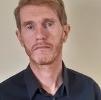Ageing is a temporal process. Although this truism is often approached via what Edmund Husserl termed the ‘natural attitude—life’s taken for grantedness, despite its inconsistencies, indeterminacies and fallacies—it points to the most enigmatic of human experiences. Indeed, the three categories that make up the core of this opening statement (ageing, temporality and process) are all moving targets which, by definition and occurrence, are transient; always undergoing transformation.
While it is far from novel to suggest that ageing fundamentally concerns time, and that both of these phenomena are essentially processual, one wonders why gerontology and its allied disciplines lack theorisations of time and temporality. This also raises a further question as to how we might rectify this problem and provide theories and concepts that capture the co-constitutional involvement of ageing, time, and process. However, in posing this question we are already confronted with difficulties of nomenclature, as the term ‘capture’ freeze frames what are essentially transitory phenomena.
While these questions are of a magnitude that cannot be adequately addressed in a blog post such as this, my aim is to provide promissory reflections on theories of temporality in the hope that they will stimulate further engagements with the nexus of ageing, time, and process. Gerontology and its allied disciplines have engaged with the categories of the life-course and life stages, as well as demonstrating the value of conducting longitudinal studies. However, ageing research has disregarded the seminal theorists of time and temporality, despite the insights they have provided regarding human experiences of time’s ineluctable process (Jan Barrs and Riitta-Liisa Heikkinen being noteworthy exceptions).
In the latter part of the nineteenth century, French philosopher Henri Bergson posited the notion of ‘duration’ to account for the smooth passing of time. For Bergson, rather than time being viewed as the distinct domains of past, present, and future, he instead understood it as an ongoing phenomenon resembling a flowing river current driven by its compulsion for the sea. Later, Martin Heidegger, in a seminal work, suggested that the future was the preeminent temporal orientation for humans. One could argue that ‘the future’ does not exist, and that future orientations are essentially the work of the imagination and premeditation. A deeper delve into Heideggerian theory demonstrates that experiences such as anticipation and expectation, prediction and speculation, and hope and aspiration are all future-focused acts that play a significant role in shaping our senses of time. Therefore, although the future may not exist, we spend an awful lot of time anticipating its arrival.
In psychology, anthropology, and primatology, reciprocity—the repeated enactment of social exchanges—not only spans time but shapes relationships and is, therefore, future-oriented. If one enters into long-term relationships with others, they are more likely to cooperate through subsequent reciprocal exchanges. This is what neuroendocrinologist Robert Sapolsky calls the ‘shadow of the future’. Here, the immediacy of one’s present behaviour and decision making is premised on the effects this may have on one’s significant social circle in the future. The metaphor ‘in the long run’ (Sapolsky 2017: 39) demonstrates this activity, as it highlights that one’s sense of self and personhood is not simply located at the level of the individual but is extended through time and within social networks. To put this in no uncertain terms, senses of self and personhood extend across time through their relationship with significant (and perhaps less significant) others who make the future through acts of reciprocity.
Sapolsky’s research also demonstrates how, what is termed ‘tit for tat’ behaviour occurs when expectations of reciprocity are low and participants do not envisage long-term durative relationships. In some sense, this reflects Gregory Bateson’s notion of schismogenesis, where one agentive act leads to a response, resulting in another, and so on, with such interactions across time and space shaping the social worlds in which we live. However, in contrast to many accounts of reciprocal exchange, Sapolsky and Bateson here demonstrate the ways that negative forms of reciprocity such as violence and schismatic acts of difference are also involved in shaping the future. One could well contend that uncertainty plays a huge role in temporal processes and what I am suggesting is too deterministic. However, if we do not know what the future holds but predict our current behaviour on the basis of long-term returns, it would be prudent to cooperate.
If all of this sounds too abstract and a long way from more quotidian experiences of ageing-in-time, we may want to remind ourselves that the world’s chaotic nature is reduced through patterning and systematisation. If this were not the case, we would not be able to communicate; a reciprocal activity based on mutual understandings regarding meaning, gesture and phonetics, which is inherently future-focused due to the anticipatory involvement of dialogical exchange. Returning to the ageing process, we may want to ask: what about the latter stages of life when uncertainty and future-focused acts of reciprocity may contract through the perception that one is closer to death?[1]
For radical life extensionists, technology holds the very real potential to extend life indefinitely; meaning that the future would be infinite. This perspective contrasts with Freudian notions of Thanatos—the death drive—in which time’s finitude compels us to live and shapes our senses of purpose and meaning. Despite claims made by Aubrey De Grey and other radical life extensionists, time and ageing, as we currently experience them, are finite phenomenon. And, as anthropologists have demonstrated, life is always and everywhere lived within limits. Limitations, as with Thanatos, are in some sense the preconditions for purposeful action. In this regard, we may ask: if we were to become immortal, thus temporally limitless, what effects would this have on our evolutionary impulse to live and reproduce in the face of certain death? And, is mortality’s limit the driving force of productive action in the short period of time that we inhabit this terrestrial domain?
But what has all of this got to do with ageing, and how does it help us to theorise and conceptualise ageing, time and process? Moving targets are, by their very nature, difficult to pin down. Yet, human life, ageing, and time are transitory processes. One has only to examine the intergenerational transmission, and changing nature of, norms, values, and even genetics in order to comprehend such processes in action. This means that as scholars, there may be productive value in us examining how the future’s indeterminacy shapes our senses of time. Additionally, it may be germane to think of ageing, time, and process not as distinct categories but as corresponding phenomena which are part and parcel of human life. This means that time, rather than being a background phenomenon, is paradoxically omnipresent; always and everywhere, but is also limited by human finitude. If doubts are cast regarding this assertion I would ask detractors to consider how both chronological and durative time shapes their lives.
Previous theories of time are not mutually exclusive and can be usefully synthesised into coherent accounts of ageing. Combining duration, future-focus, and the ongoingness of reciprocal exchange, could hold promise for further research on age and ageing. As a promissory step towards this end; the sequential unfolding of life with one moment bleeding into another, the structured periodisation of chronological time, and the future-focused experience of anticipation, expectation, and hope, demonstrates the multifarious nature of temporal phenomena.
Ageing research has employed longitudinal studies and life course methodologies and problematised the developmental concept of life stages to good effect. However, theoretical engagements with the messy, indeterminate and contingent experiences of human time and temporality may provide fruitful avenues for processual analysis. In the spirit of the blog’s temporal focus, let us return to the beginning as a motif for the anticipatory work I hope to have initiated in this post: Ageing is a temporal process.
[1] Such contraction may account for why late-stage older adults often cease to form new social relations and could provide insights into the connection between brain transformations and social isolation.
About the Author
Dr Anthony Howarth is a Research Fellow at the Institute of Population Ageing, a Research Associate at University College, and a Research Affiliate at the Institute of Social and Cultural Anthropology, at the University of Oxford. His current research focuses on how the relationship between design, place, community and intergenerational living might enable healthy ageing.
Opinions of the blogger is their own and not endorsed by the Institute
Comments Welcome: We welcome your comments on this or any of the Institute's blog posts. Please feel free to email comments to be posted on your behalf to administrator@ageing.ox.ac.uk or use the Disqus facility linked below.













